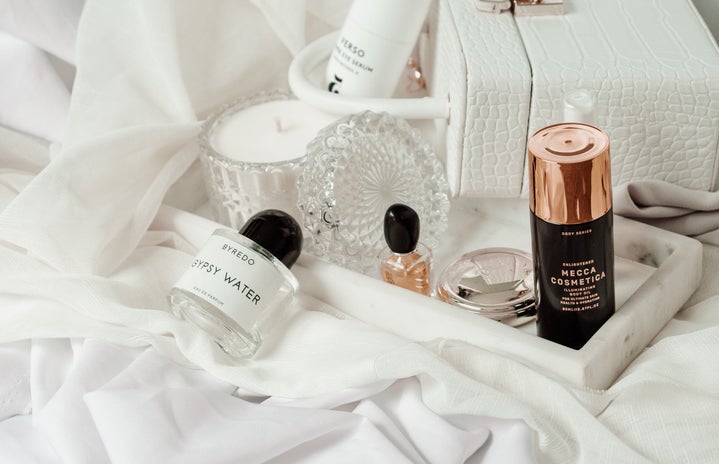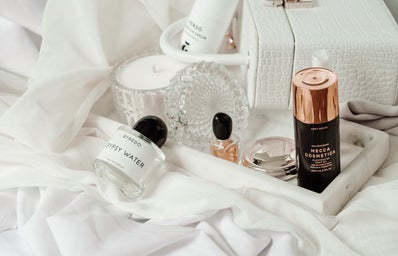Curly hair has been an ongoing struggle and blessing in my life for the past 20 years. There’s no avoiding it, and there’s no getting around it; I’ve tried. When I was younger, I didn’t have much of a stake in what happened to my hair. I remember being five or six years old and sitting on the ground while my mom combed through my hair after a bath. She would detangle, and I would cry. She would part, and I would cry. She would braid, and I would cry. Basically, there was a lot of crying. Eventually, we would both collapse into our beds at the end of the night, and the six little braids resting on my head would cascade over my pillow.
After eight years of my mother’s ongoing war with my hair, I started getting it professionally braided at salons. Once a month, on a Saturday, my mom would pack me in the car, and we would go sit for hours while my hair was once again washed, detangled and braided. Despite the best efforts of the hairdressers, I hated having my hair braided. It always looked great, but after two days, I grew tired of having the same hairstyle. I would ask to have the braids taken out, and my mother, who had paid a great deal of money to have them put in, would say no.
As soon as I was old enough to “do” my hair, I did. This was around the age of 10 when I thought that max-holding mouse was my best friend. I would hop out of the shower, tear through my hair with a brush and apply enough mouse to make my hair as crunchy as a potato chip. If I was feeling fancy, I’d slide on a headband too. While I appreciated the new freedom that I received in doing in my hair, I still wanted looser curls and longer hair. At the time, the only way I knew I could get that was with a relaxer.
The idea of having my hair chemically straightened had come up in conversation before, but I had rejected it. Despite my mental and physical struggle with having curly hair, I still felt like it made me unique and beautiful. If I ultimately got rid of the curls, I’d be completely getting rid of a part of myself. When I was 12, I talked to a new hairdresser about it. She informed me that my hair was far too curly to be straightened out by one round of relaxer. Instead, she said, the chemicals would only loosen my curls. This seemed to be the perfect solution to all of my problems. It was then that I started relaxing my hair and for a while, it seemed to be exactly what I wanted. I had loose curls, and my hair looked longer. But, after a few years of relaxers, my hair began to feel thin, and it didn’t seem to be growing from what I could tell.
After watching the documentary “Good Hair” at 15, I decided to stop using relaxers on my hair. That documentary was the first time I had ever considered what would be healthy for my hair. Once I decided to quit relaxers, my hair became a dichotomy of my past and my present. At my roots were tight coils, and on my ends, were limp wavy pieces. I went to my hair salon and without even knowing it, I got a big chop. The big chop is when you cut off the relaxed (and damaged) hair from new growth. I hated how short my hair was, but it did feel healthier than it had felt in years.
I was insecure about how short my hair was, so I began to straighten it all of the time. For half of my high school career, I used heat on my hair every single day. While I knew this wasn’t healthy, I thought it looked better. I was willing to pay the price of damaged ends. Eventually, I stopped straightening my hair. However, this change was attributed to laziness, not healthy hair concerns.
After a while of wearing my hair constantly curly, I became more secure in the way it looked. I had always felt that my hair was one of my defining characteristics but by 17, I was proud of it. My new-found confidence in my hair made me want to take better care of it. I started watching curly hair-care videos and looking into the best products and tricks. What I found wasn’t surprising: curly hair is high-maintenance hair. There are a million methods and products that promise healthier coils, but they also require a substantial time commitment.
While I was willing to put some effort into doing my hair, multiple hours of washing and detangling followed by precise styling techniques wasn’t going to work for me. I was too busy and ultimately, too lazy to participate in the strenuous work that it took to accomplish the perfect mane of curls. So, I decided to cherry-pick the tips and tricks I used.
I found that using a wide-tooth comb did help in detangling my hair after a wash (and it hurt less). A microfiber towel was also an easy way to cut back on frizz and breakage without adding a lot of time to my hair care routine.
Choosing hair care products was a whole other beast. I knew that parabens and sulfates were supposed to be bad for curly hair, so I tried to avoid them in the products that I used. Most hair products found in the ethnic hair care section say right on the front of the label whether they are free of certain products. If it doesn’t say it on the front, I’d be lying if I said I bothered to look at the back. I tend to focus more on what the product says it will do for my hair. If it has moisture and reduces curl shrinkage, I want it.
What resulted from my research and careful selection of tips was a lazy-girl version of a curly hair routine. At first, I felt terrible that I wasn’t doing everything in my power to have the best hair possible. I wasn’t doing multiple hair masks, on a strict washing schedule or reading the entirety of the ingredients on my products. But, I did feel like I was taking care of my hair. My curls felt healthier and stronger. More importantly, I felt more confident in my hair and my abilities to maintain it. While my hair care routine may not be a beacon for the curly-hair community, it is my routine, and it works for me. The most important lesson I learned throughout the entire process was that when it comes to taking care of my hair and taking care of myself, I have the power to make my own decisions and decide what works best for me.


